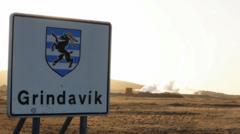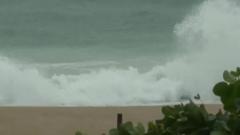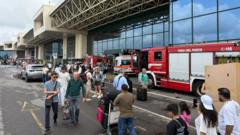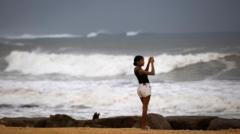A volcanic eruption has commenced on the Reykjanes Peninsula in south-west Iceland, specifically north of the town of Grindavík, as confirmed by the Iceland's Meteorological Office (IMO). The eruption started around 09:45 local time (10:45 BST), following a series of earthquakes that rattled the area around 06:30 local time. Soon after, a fissure approximately 700 meters (2296 feet) wide was reported, and it continues to expand.
In anticipation of the eruption, residents of Grindavík and the nearby Blue Lagoon spa, a well-known tourist attraction, had already been ordered to evacuate. Consequently, major roads leading in and out of the town are currently closed, although flight operations remain uninterrupted. As of 11:00 local time, the initial fissure was extending southward with the emergence of a new crack.
Authorities have urged any remaining individuals in Grindavík to vacate the area promptly. Some reports indicate that a few residents initially resisted the evacuation order. According to Úlfar Lúðvíksson, the local police chief, only around 40 houses were still occupied within the town, following previous evacuation measures for roughly 4,000 residents in November 2023, ahead of eruptions in the months that followed.
The length of the magma tunnel that has developed beneath the crater series measures about 11 kilometers (6.8 miles), marking the longest tunnel recorded since November 11, 2023. As the event unfolds, the IMO indicated that prevailing wind patterns could lead to gas pollution traveling northeast towards the capital area.
The Reykjanes Peninsula has witnessed multiple eruptions since 2021, contrasting with the last significant volcanic activity that occurred there approximately 800 years ago, which persisted for several decades. Iceland is home to 33 active volcanic systems and is located atop the Mid-Atlantic Ridge, which delineates the division between two major tectonic plates.


















